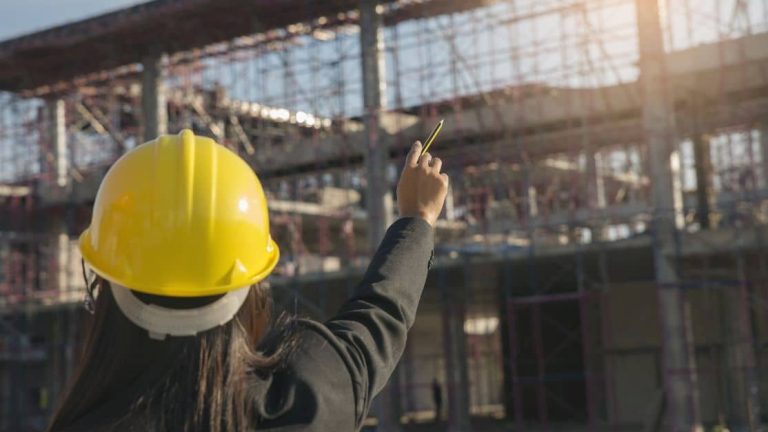Construction sites are some of the most challenging working environments. They’re also filled with hazards and risks that must be constantly monitored and proactively mitigated. Construction site safety training cards help construction workers manage their time, prioritize tasks, and remain safe throughout their projects. These cards are a great way to keep information organized, accessible, and concise, so your team can efficiently address potential risks in real time. Let’s get started…
Why Are Site Safety Training Cards Important?
A construction site safety training card can help keep your team safe by providing essential safety information and procedures on a single, portable card. This way, anyone on the site can easily reference and understand critical information, even in the midst of a stressful situation. You’ll also be able to create documentation of your site’s safety procedures and share it with your team members and supervisors alike. This documentation helps to protect your site from liability should an incident occur. A well-documented safety procedure provides proof that site leaders are actively engaged in enforcing a safe site environment — not just paying lip service to the importance of safety. Construction site safety training cards can be used to reduce the risk of catastrophic incidents like falls, electrocutions, and burns. They may also increase the efficiency of your team, as they help workers remember how to respond to emergencies, such as electrical or scaffolding accidents.
How to Create Your Own Site Safety Training Cards
The first step in creating your site safety training cards is to identify what you want to include on them. You may want to prioritize general safety information, or you may want to focus on specific hazards and risks associated with your project. Depending on your needs, you can create your cards using a pencil, pen, or computer. It’s up to you! Just make sure you have all the relevant information in front of you as you write or type. Now, let’s take a look at what goes into a general safety card and a couple of site-specific examples.
General Site Safety Card
A general site safety card should include instructions on how to respond to emergencies and a brief overview of your site’s safety procedures. You may also want to include location-specific hazard information, such as the distance to the nearest fire hydrant. A general safety card can be a good starting point for anyone who will be on your site, including workers, visitors, and subcontractors. Should you create a general safety card or a site safety card for each project? Whether you choose to create a general safety card or a site-specific safety card depends on your specific site. If your project is in a high-risk area, you’ll probably have a lot of specific safety information that needs to be included on your cards.
Site Safety Card Checklist
As we mentioned above, site-specific cards are ideal for projects that are located in high-hazard areas. In order to create a site safety card checklist, you’ll need to carefully assess your site and identify potential hazards. You can do this by meeting with your construction team and site management, and by reviewing your construction drawings. A site safety card checklist should include all of the standard safety information that appears on a general safety card, plus site-specific hazards. Make sure to prioritize your hazards, and include the most dangerous or urgent hazards on the top of the card.
Roofer/Scaffolding Safety Card
The first site-specific card we’ll look at is a roofer/scaffolding safety card. In order to create this card, you should first define the type of project that you’re building and the specific hazards associated with it. For example, you should consider the type of roofing material you’re using, the type of scaffolding being used, and the potential for inclement weather (like hurricanes or tornadoes).
Masonry & Stonework Safety Card
The next site-specific card we’ll explore is a masonry & stonework safety card. While there are a few hazards that are common to all construction sites, there are also many hazards that are job-specific. A masonry & stonework safety card should include instructions on how to respond to the hazards that are specific to your project, including instructions on how to use heavy machinery and other equipment.
Electrical Safety Card
An electrical safety card is critical if the construction project you’re working on involves electrical work. This is one of the most dangerous construction projects out there, and it’s essential for workers to understand the appropriate safety precautions. It’s important to note that electrical safety cards should be created in conjunction with a site-specific wiring and grounding plan. The wiring and grounding plan will outline your project’s electrical requirements, and it will help you create a safe and efficient electrical system.
Concrete & masonry dam safety card
A concrete & masonry dam safety card is ideal for a project where you’re constructing a concrete or masonry dam. If you’re building a dam, you’ll want to consider the potential risks and hazards associated with the project. Might you be working with concrete and masonry? What about water levels? What are the appropriate safety precautions? You’ll want to include all of this information on your concrete and masonry dam safety card.
Conclusion
A construction site is a complex environment, and it can be challenging to keep workers safe. Fortunately, you can use site safety training cards to help educate and prepare your team for potential hazards. A site safety card should include general safety information and site-specific hazards. It’s important to remember that safety cards should be regularly updated and maintained. They should be checked and verified at the beginning of each shift and after any significant weather event.

